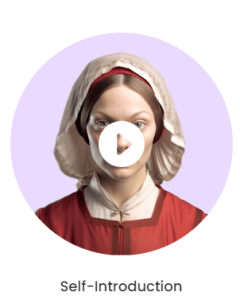The instantiation of an AI that can read still images, requires a complex set of technical steps (that marry Machine Learning with Computer Vision and Audio Processing). The process in great detail
Collecting a large dataset of facial images with and without audio clips. This dataset must contain a variety of facial expressions and lip movements. A dataset containing at least 1 million images is required to train facial animation models accurately (University of Washington, Study)
The AI recognizes the major facial landmarks using algorithms such as Dlib, and OpenFace. This takes a number of points on someone's face (like eyes, ears and lip corners), to give you some friendly animation skeletal! The precision of these landmarks is vital, and contemporary systems can attain 95% accuracy.
Model Training - The neural network is trained using deep learning frameworks like TensorFlow/PyTorch to find correlation between facial movements and audio. This step is often implemented using GANs (Generative Adversarial Networks) [1]. Nvidia's GAN research also revealed that training on high-end GPUs can cut weeks of time to days
Synchronized Audio: The AI syncs the lips with your audio input. This includes phoneme-to-viseme mapping: translation of sounds to mouth shapes. Google has set the standard in this space with its Wavenet model, to which is said can imitate near-human realism and lip sync when paraphrasing human speech.
Output: Animation Generation (Then model is trained for generating the animations by Tunning of facial landmarks to connect with audio) With the rendering techniques that perform when transitioning without fighting for functionality or lifelike expressions. Adobe uses sophisticated rendering algorithms to create high-quality animations in a timely manner.

Quality Control: The output of the ML model has to be realistic and bug-free after extensive testing. Synchronization & Unnatural Movements: Automated testing tools are excellent for identifying synchronization errors and unnatural movements. According to an MIT report, human test reviewers can discover subtle bugs that often fall through the cracks of automated systems - preventing a slip in quality assurance (QA) rate from 99% aspirational benchmark.
Deployment : The model is then deployed onto the system or application post testing. You can achieve this via cloud platforms, say AWS or Google Cloud where they provide on-demand and scalable resources to manage heavy request loads. Deep Nostalgia of MyHeritage, as an example runs on AWS and animates millions of photos per day.
Ethical Concerns: We need to seriously think about the ethical issues involved with building a Picture Talking AI and using it. They also make sure that they have the consent of their target audience and avoid misuse. But as prominent AI ethicist Timnit Gebru has said, for developers do no evil should come above everything so that harm will not be done.
Picture Talking AI - A primer for the making, with some ground facts and fiction on top of it... It involves using complex algorithms, requires copious amounts of pristine data and thorough vetting to ensure the end product is useful as well as ethical. To learn more on this technology kindly visit picture talking ai